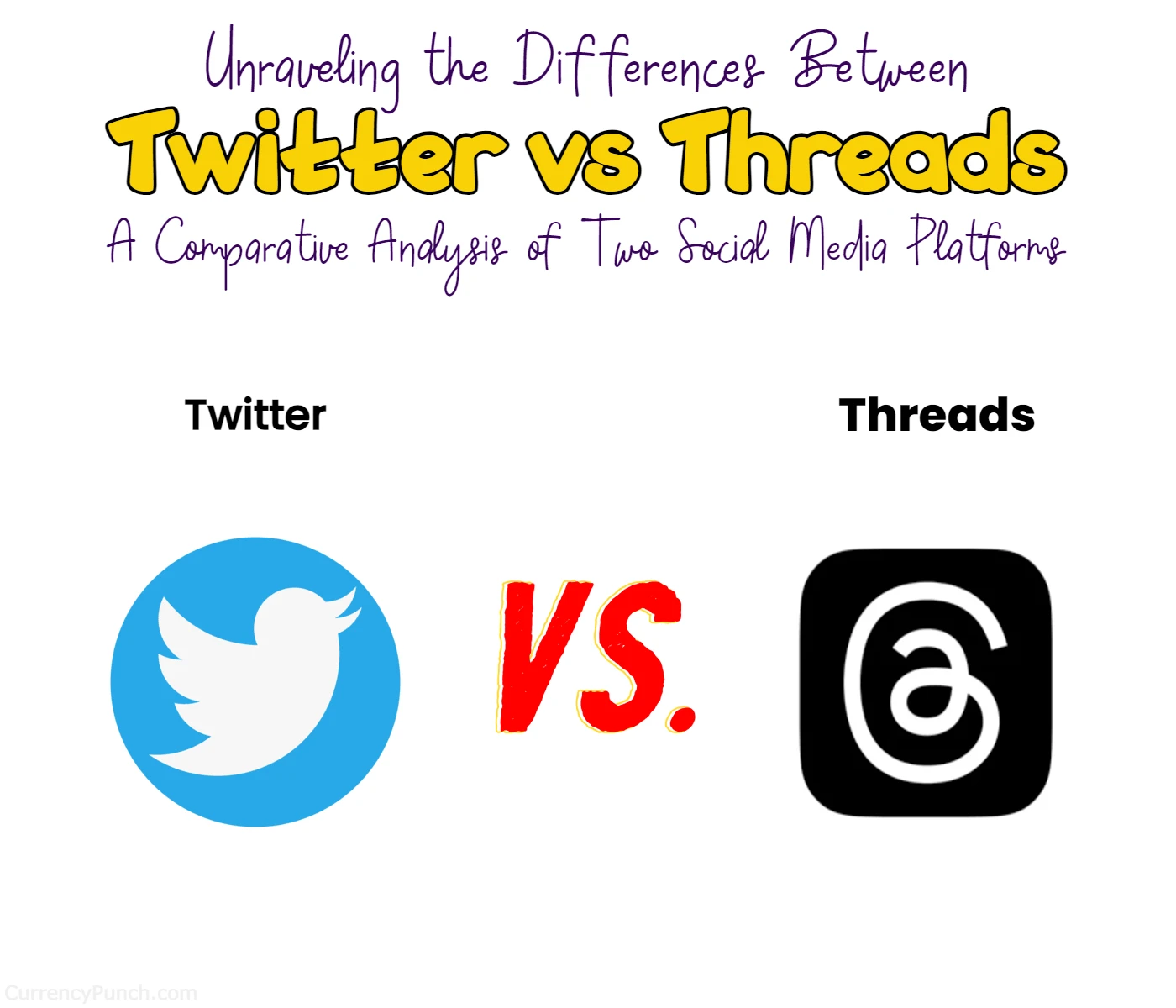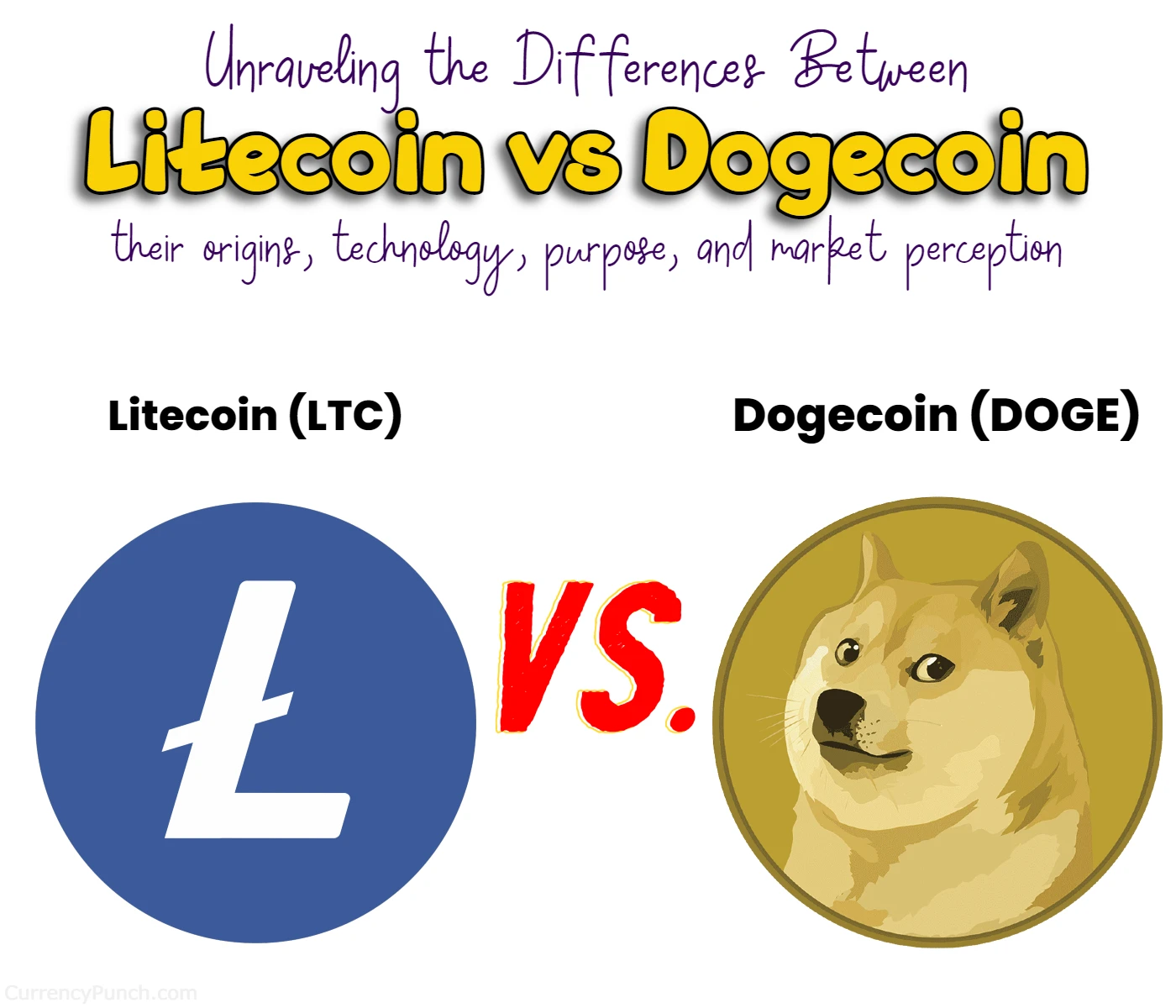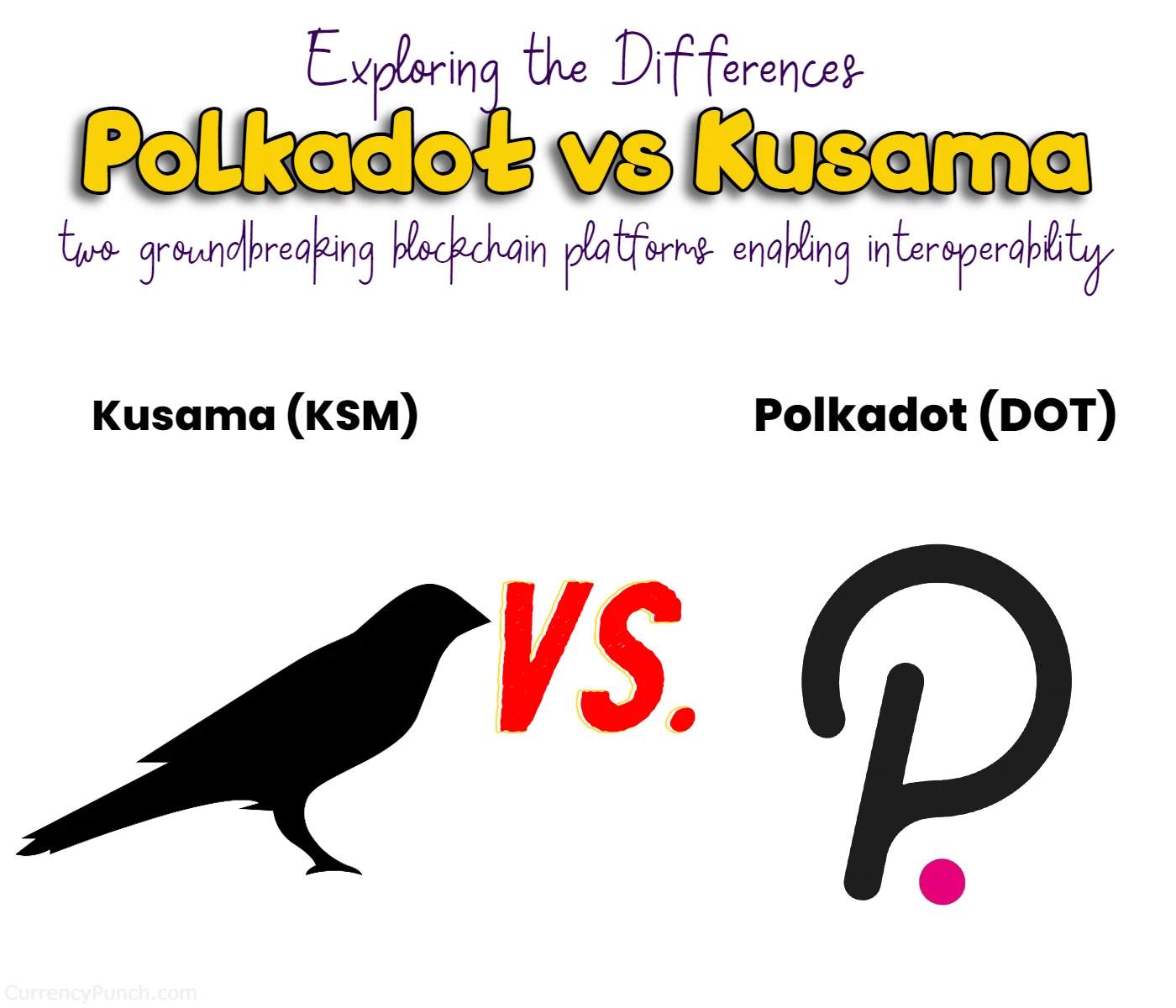What is the difference between Polkadot (dot) and Cosmos (atom)?
Polkadot vs Cosmos: Unraveling the Differences

Are you ready for a journey into the world of blockchain ecosystems? In this blog post, we’re going to explore the fascinating differences between Cosmos (ATOM) and Polkadot (DOT). These two projects have been making waves in the crypto space, each with its own unique approach to revolutionizing the way blockchains interact and collaborate. So, if you’re curious to learn more about the distinctive goals, technologies, governance models, and interoperability features of Cosmos and Polkadot, you’re in the right place!
Cosmos (ATOM) and Polkadot (DOT) are both striving to solve the problem of blockchain fragmentation, but they do so in their own innovative ways. Cosmos envisions an “Internet of Blockchains,” where interconnected networks can seamlessly communicate and exchange information. On the other hand, Polkadot aims to create a multi-chain ecosystem where specialized blockchains can operate in parallel and securely interact with one another. These diverse goals set the stage for an exciting comparison of the technologies and architectures that power these projects.
When it comes to the underlying technology, Cosmos utilizes the Cosmos SDK, a powerful software development kit that empowers developers to build custom blockchains, known as “zones,” that can communicate with the central hub blockchain, the “Cosmos Hub.” Polkadot, on the other hand, is built on a heterogeneous multi-chain architecture, comprising a relay chain and multiple parachains. The relay chain ensures security and consensus, while parachains can be specialized for specific use cases. This fundamental difference in architecture greatly influences the capabilities and scalability of these ecosystems.
Here’s a quick chart highlighting the key differences between Polkadot (DOT) and Cosmos (ATOM):
| Cosmos (ATOM) | Polkadot (DOT) | |
|---|---|---|
| Goals | Create an “Internet of Blockchains” for seamless communication and interoperability | Establish a multi-chain ecosystem for parallel operation and secure interaction between specialized blockchains |
| Architecture | Cosmos SDK with central hub (Cosmos Hub) and custom blockchains (zones) | Heterogeneous multi-chain architecture with relay chain and specialized parallel chains (parachains) |
| Consensus Mechanism | Tendermint Core (Byzantine Fault Tolerant) | Nominated Proof of Stake (NPoS) |
| Governance Model | ATOM Governance with token holder voting on proposals | DOT Governance with token holder voting and council representation |
| Interoperability | Inter-Blockchain Communication (IBC) protocol for secure communication between blockchains | Native interoperability through relay chain and shared security for parachains |
| Scalability | Independent blockchains running in parallel | Horizontal scalability with the addition of more parachains |
| Native Cryptocurrency | ATOM | DOT |
| Ecosystem | Growing ecosystem with projects like Binance Chain, Terra, Kava | Vibrant ecosystem with projects like Acala, Chainlink, Moonbeam |
| Market Position | Established market presence | Significant interest and growing adoption |
Difference between Cosmos and Polkadot
Understanding the Goals
Cosmos (ATOM):
Cosmos aims to create an “Internet of Blockchains,” enabling seamless communication and interoperability between independent blockchains. The project seeks to address the issue of blockchain fragmentation by providing a scalable and adaptable framework for building interconnected networks.
Polkadot (DOT):
Polkadot, on the other hand, aims to facilitate a multi-chain ecosystem, allowing various blockchains to operate in parallel and exchange information and assets securely. Polkadot envisions a future where different specialized blockchains can communicate and collaborate effectively.
Architecture and Technology
Cosmos (ATOM):
Cosmos employs a unique framework called the “Cosmos SDK” (Software Development Kit). It enables developers to build custom blockchains called “zones” that can interact with the central hub blockchain known as the “Cosmos Hub.” The Cosmos Hub serves as the main point of interconnectivity for all the zones in the Cosmos network.
Polkadot (DOT):
Polkadot is built on a heterogeneous multi-chain architecture, which consists of a central relay chain and multiple parachains (parallel chains). The relay chain handles the network’s security and consensus, while parachains can have their own characteristics and functionalities, making them specialized for specific use cases.
Consensus Mechanisms:
Cosmos (ATOM):
Cosmos utilizes a consensus mechanism called Tendermint Core, which is a Byzantine Fault Tolerant (BFT) consensus algorithm. Tendermint ensures fast finality and high scalability while maintaining security and consistency across the Cosmos network.
Polkadot (DOT):
Polkadot employs a unique consensus algorithm called “Nominated Proof of Stake” (NPoS). In NPoS, DOT holders can nominate trustworthy validators who secure the network and participate in block production. This system promotes decentralization and avoids the concentration of power among a few validators.
Governance Models
Cosmos (ATOM):
Cosmos has a governance model known as “ATOM Governance,” where ATOM token holders can participate in the decision-making process by voting on proposals. This inclusive approach allows stakeholders to have a say in the development, upgrades, and overall governance of the Cosmos ecosystem.
Polkadot (DOT):
Polkadot features an on-chain governance system called “DOT Governance.” DOT token holders can vote on referenda and council motions, influencing the network’s parameters, upgrades, and treasury management. The governance process encourages active participation from the community, ensuring a more decentralized decision-making process.
Interoperability
Cosmos (ATOM):
Cosmos places a strong emphasis on interoperability. Its Inter-Blockchain Communication (IBC) protocol enables secure and seamless communication between independent blockchains in the Cosmos ecosystem. IBC allows for the transfer of assets and data across different chains, fostering collaboration and expanding the possibilities for decentralized applications (dApps).
Polkadot (DOT):
Polkadot’s design inherently promotes interoperability through its heterogeneous multi-chain architecture. The relay chain acts as a bridge, facilitating communication and asset transfers between parachains. This interoperability feature allows specialized chains to interact with each other and leverage shared security and resources provided by the Polkadot network.
Ecosystem and Adoption
Cosmos (ATOM):
Cosmos has garnered significant attention and support within the blockchain community, with a growing ecosystem of projects and developers building on the platform. Some notable projects in the Cosmos ecosystem include Binance Chain, Terra, Kava, and Akash Network. The adoption of Cosmos technology extends to various sectors, including decentralized finance (DeFi), cross-chain asset transfers, and application-specific blockchains.
Polkadot (DOT):
Polkadot has also gained substantial traction in the blockchain space, attracting a vibrant ecosystem of projects and developers. Notable projects in the Polkadot ecosystem include Acala, Chainlink, Moonbeam, and Kusama. The modular nature of Polkadot allows for easy integration of new parachains, fostering innovation and specialization across different industries.
Scalability and Performance
Cosmos (ATOM):
Cosmos aims to address scalability challenges by enabling the creation of independent blockchains that can run in parallel. This approach allows for increased throughput and reduced congestion on the main hub. However, the scalability of Cosmos largely depends on the performance and scalability of individual zones within the network.
Polkadot (DOT):
Polkadot’s architecture is designed to scale horizontally by adding more parachains to the network. Each parachain can operate independently, enabling the network to process multiple transactions and smart contracts in parallel. This scalability approach allows Polkadot to handle a higher transaction volume compared to traditional single-chain blockchains.
Token Economics
Cosmos (ATOM):
ATOM is the native cryptocurrency of the Cosmos network. It serves as a staking and governance token, allowing holders to participate in consensus and governance processes. Staking ATOM tokens provides the opportunity to earn rewards while securing the network. Additionally, ATOM tokens are used to pay for transaction fees and participate in decentralized applications within the Cosmos ecosystem.
Polkadot (DOT):
DOT is the native cryptocurrency of the Polkadot network. It has multiple functions within the ecosystem, including governance, staking, and bonding. DOT holders can participate in the governance process and have the ability to nominate or become validators. Staking DOT tokens allows participants to secure the network and earn staking rewards.
Development and Roadmap
Cosmos (ATOM):
Cosmos has an active development community and a roadmap focused on improving its core technologies, expanding interoperability, and enhancing user experience. Future upgrades include the introduction of the Gravity DEX, which aims to provide a decentralized exchange for assets across different blockchains within the Cosmos ecosystem.
Polkadot (DOT):
Polkadot continues to iterate and enhance its network through regular upgrades and improvements. The development roadmap includes the deployment of additional parachains, the integration of various cross-chain functionalities, and the advancement of the Polkadot ecosystem as a whole.
Security Model
Cosmos (ATOM):
Cosmos relies on the security provided by its consensus mechanism, Tendermint Core, which ensures Byzantine Fault Tolerance. The network’s security is dependent on the validators who participate in block production and consensus. Validators are economically incentivized to behave honestly and protect the network’s integrity.
Polkadot (DOT):
Polkadot employs a shared security model where the relay chain provides security for all connected parachains. This means that the security of each parachain is backed by the combined computing power and consensus of the entire Polkadot network. The shared security model enhances the overall security of the ecosystem.
Governance Flexibility
Cosmos (ATOM):
Cosmos provides a flexible governance model that allows the network to evolve and adapt over time. The on-chain governance process enables token holders to vote on proposals and make decisions regarding network upgrades, parameter changes, and funding allocations. This decentralized decision-making mechanism ensures a high level of community involvement.
Polkadot (DOT):
Polkadot’s governance model features both on-chain and off-chain components. The on-chain governance allows DOT token holders to vote on referenda and council motions, shaping the future of the network. The off-chain governance involves the Council, a group of elected individuals who represent the interests of the community and make important decisions.
Ecosystem Expansion
Cosmos (ATOM):
Cosmos is actively expanding its ecosystem through partnerships and collaborations. The project has formed strategic alliances with other blockchain networks and organizations, aiming to create a robust and interconnected blockchain ecosystem. By integrating with various projects and protocols, Cosmos aims to enhance interoperability and foster innovation.
Polkadot (DOT):
Polkadot has a strong focus on ecosystem growth and aims to attract a wide range of projects and developers. The project encourages the development of parachains and offers support for building decentralized applications through its Substrate framework. The Polkadot ecosystem benefits from a diverse range of projects that leverage its interoperability and scalability features.
Community and Adoption
Cosmos (ATOM):
The Cosmos community is vibrant and growing, with active participation from developers, validators, and token holders. The project has gained attention within the blockchain space and has seen significant adoption of its technology by various projects. The community’s engagement and support contribute to the overall success and sustainability of the Cosmos ecosystem.
Polkadot (DOT):
Polkadot has garnered substantial interest and support from the blockchain community. The project has attracted high-profile partnerships and collaborations, leading to the development of innovative projects within its ecosystem. The growing adoption of Polkadot’s technology showcases its potential to revolutionize the way blockchains interact and collaborate.
Regulatory Compliance
Cosmos (ATOM):
Cosmos, as a decentralized network, does not have direct control over the compliance of the applications built on its platform. It is the responsibility of the individual projects and developers to ensure compliance with relevant regulations and laws in the jurisdictions they operate in.
Polkadot (DOT):
Polkadot does not enforce compliance on the network level either. Compliance requirements and regulations vary from project to project within the Polkadot ecosystem. Developers and projects building on Polkadot need to adhere to applicable regulations and ensure compliance within their respective jurisdictions.
Conclusion
In conclusion, both Cosmos (ATOM) and Polkadot (DOT) are ambitious blockchain projects with distinct approaches to addressing the challenges of blockchain interoperability and scalability. While Cosmos focuses on an interconnected network of independent blockchains, Polkadot adopts a multi-chain architecture that enables parallel processing and specialized functionalities.
Ultimately, the choice between Cosmos and Polkadot depends on the specific requirements of developers, projects, and users. Each ecosystem offers unique features, governance models, and opportunities for innovation. As the blockchain industry evolves, both projects are poised to contribute significantly to the advancement of decentralized applications, cross-chain communication, and the overall blockchain ecosystem.
FAQs
The main difference lies in their architectural designs. Cosmos aims to create an interconnected network of independent blockchains (zones) that can communicate with the central hub (Cosmos Hub). In contrast, Polkadot adopts a multi-chain architecture with a relay chain and specialized parallel chains (parachains) that operate in parallel and securely interact with each other.
Cosmos achieves interoperability through the Inter-Blockchain Communication (IBC) protocol, which enables secure communication and asset transfer between different blockchains within the Cosmos ecosystem. Polkadot achieves interoperability through its relay chain, which facilitates communication and shared security among parachains, allowing them to interact seamlessly.
Cosmos utilizes Tendermint Core, a Byzantine Fault Tolerant (BFT) consensus mechanism that ensures secure and consistent block production. Polkadot employs Nominated Proof of Stake (NPoS), where token holders nominate validators who participate in block production and consensus, ensuring the security and stability of the network.
Cosmos follows an on-chain governance model where ATOM token holders can vote on proposals to decide on network upgrades and parameter changes. Polkadot’s governance model combines on-chain and off-chain components. DOT token holders can vote on referenda, while a Council, composed of elected individuals, makes important decisions and represents the community’s interests.
Cosmos has a growing ecosystem with projects like Binance Chain, Terra, Kava, and Akash Network, focusing on various sectors such as decentralized finance (DeFi) and cross-chain asset transfers. Polkadot’s ecosystem includes projects like Acala, Chainlink, Moonbeam, and Kusama, which leverage the platform’s scalability and interoperability features.
Read More:
Page Contents
- Difference between Cosmos and Polkadot
- Conclusion
- FAQs



